One of Tokyo’s coffee kings calls it quits after 38 years pursuing perfection.
It sounds like white noise, a gentle static barely perceptible over the din of Tokyo traffic that flashes by two floors below. But as you sit there at the bar, it continues to pull you in, until you’re off your stool, wandering towards the source of the sound in the corner. As you walk, it grows louder, at first like the rustle of autumn leaves and then like a rake dragged across a rock garden. You get to the corner, to a small curtain that registers gentle movement behind it, and you pull it back.
An older man with thick glasses and a soft, white tuft of hair is seated at a table. There is a wide, flat wicker basket before him, and he is bent over in the chair, his face close to the surface of the basket, like a prospector sifting for gold. When you lay your eyes on the source of the sound, your jaw loosens and your lips part. The man is picking through a batch of warm, just-roasted coffee beans, one by one, running his fingers over their surfaces like a sinner over a rosary, searching for any tiny imperfection that might pollute his next cup of coffee.
This is not the first time these beans have been picked through. They were sifted once in the Brazilian countryside, before they left the farm. Sifted again at a processing plant on the coast before they filled a shipping container bound for Tokyo. And sifted a third time, exactly 32 minutes ago, before the man with the soft white hair and thick glasses loaded them into his hand-propelled roaster and set about transforming them from pale green cherries into dark mahogany orbs. None of that matters to the man, though, who loses himself entirely in this final act of filtration.
His name is Katsuji Daibo, 66 year-old owner of Daibo Coffee in Tokyo’s Omotesando District, and he makes what may be the world’s most labor-intensive cup of coffee.
FOR 38 YEARS, DAIBO HAS BEEN TRANSFORMING COFFEE FROM A CAFFEINE FIX INTO A RELIGIOUS EXPERIENCE
“I wanted to bring the details of the tea ceremony to the coffee world,” he says. This is no small ambition; tea ceremonies go back millennia and involve an intricate web of cultural, religious, and historical practices woven into tea making so methodical that a single cup can stretch on for hours. But for 38 years, Daibo has made good on his goal, transforming coffee from a caffeine fix into a religious experience. But as many of Japan’s master craftsmen seem to be finding out these days, not even the purest devotions can survive eternally. In the case of Daibo, the high priest of roasted bean and muddy water, the enemy is gentrification. The building that houses his shop has been purchased by a new owner with ambitious plans for the future. On December 23rd, Daibo will serve his last cup of coffee to the public.

Japan may claim one of the world’s great tea cultures, but it’s no stranger to the coffee bean. Coffee arrived in the country in the 18th century, piled high in the bellies of Dutch trading ships. It went relatively unnoticed by most Japanese until, in the early 20th century, the Brazilian government began sending free coffee beans to Tokyo shop owners. By the 1930s, you could find 3,000 kissaten, traditional Japanese coffeeshops, in Tokyo. But when coffee supplies dried up during World War II, kissaten (called kissa for short) owners roasted and brewed soybeans instead, which did little to spread the coffee gospel.
A CURRENT OF CAFFEINE AND A RESPITE FROM CITY LIFE WAS THE BOND THAT HELD THEM ALL TOGETHER
Like so many other modern staples of Japanese culture, true coffee culture didn’t take root until after the war. Encouraged by a robust import trade and a surge in interest in Western culture, the kissa scene exploded in the 60s. Specialty kissa flourished, a network of shops each geared for their own specific use: for jazz concerts, for business deals, for napping, for the early stages of courtship. A current of caffeine and a respite from city life was the common bond that helped tie them all together. By the time the 80s hit, more than 150,000 kissa covered Japan from Hokkaido to Okinawa.
Then came a familiar story for coffee cultures around the world: the birth of chain coffee, places like Doutour Coffee that offered the promise of a quicker, cheaper cup of coffee in a more contemporary setting. Adding to the rise of the modern café was the sudden profusion of hot and cold vending machines, found on city and rural blocks alike, an omnipresent supplier of caffeine fixes across Japan. By 1981, two decades after their initial surge, the total number of kissaten in Japan had shrunk in half.
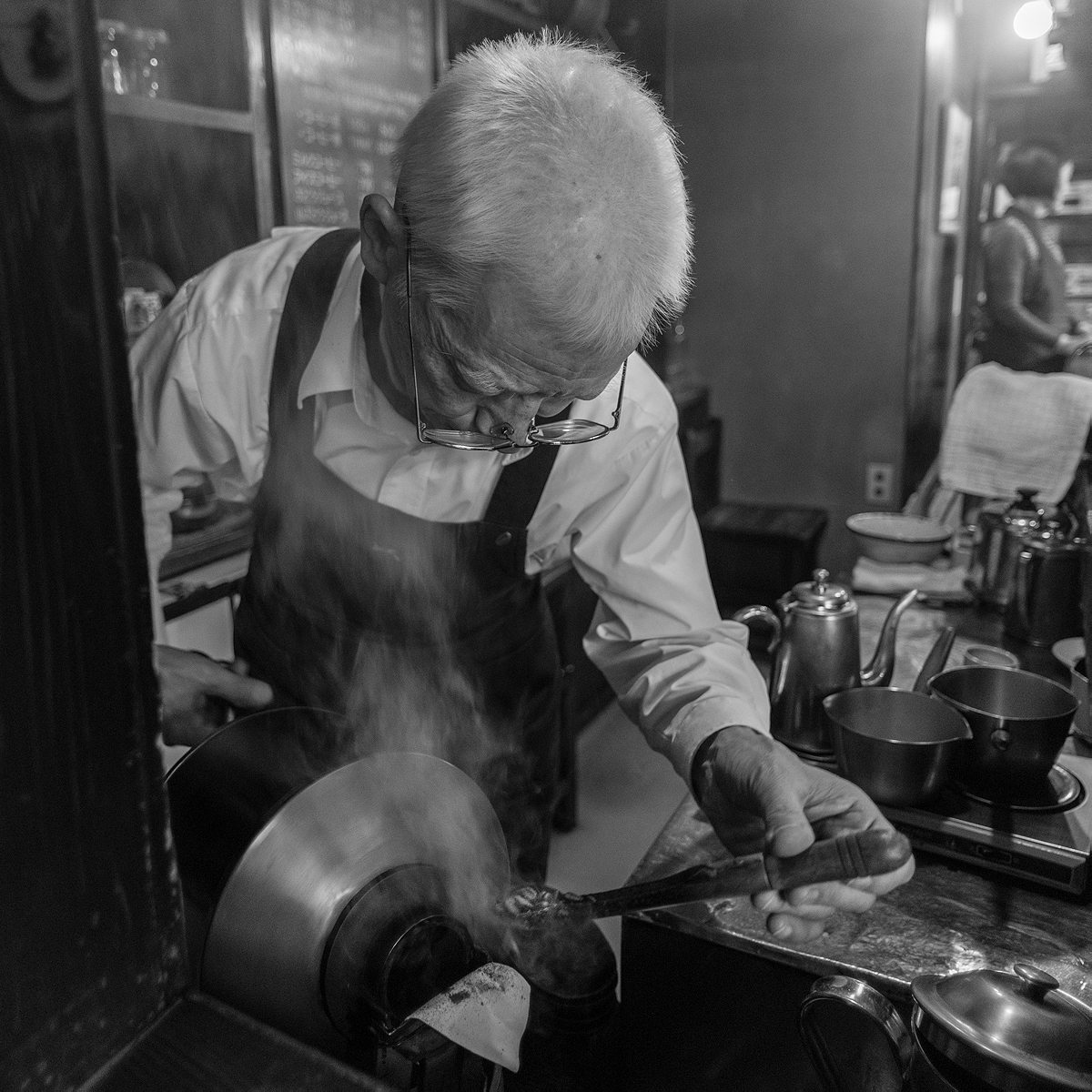
In between the kissa boom and the rise of commercial coffee, there was Daibo. He first became interested in coffee during the caffeine surge of the 60s. He and his high school friends would visit coffee shops around Tokyo, percolating a passion and learning about the business. He started blending and brewing his own coffee as a side hobby, but in 1975, he moved into his current space and opened Daibo Coffee.
“Little has changed since then,” says Daibo-san. The hand-cranked grinder has been replaced by an electric burr grinder (the only piece of coffee equipment in the shop that requires an outlet), and the walls and book shelves have darkened from decades of coffee and cigarettes, but everything else remains the same: the long bar that looks like it’s been polished with molasses, the chalkboard menu that hangs from the wall, the clients that may or may not ever go home.
The first thing that hits you is the smell, which begins as a current of toasted bread wafting outside onto the sidewalk in front of the building and builds to a deep, sticky, toffee-and-tobacco wave that crashes over you the second you slide open the door. The books and the walls and the window frames wear it like a tree wears rings; the man himself wears it like a badge of honor, a perfume that announces to the world his seriousness of intent. And if you sit at Daibo long enough for the master to make you a cup of coffee, you will carry that smell around with you for days.
Daibo roasts every last batch of coffee himself in a hand-cranked roaster set over a gas burner. He stands patiently, spinning the beans like lottery balls, ensuring they all get equal face time on the hot surface of the roaster. As the fruit goes from green to beige a thin wisp of smoke escapes from the belly of the roaster, announcing the earliest stages of the transformation. As they turn from beige to brown to nearly black, that wisp becomes a cloud that rises to the ceiling and hangs over the bar, a reminder to everyone there that coffee, in its truest form, is an evolution. He inserts a metal scraper, removes it, stares at it for a second, looking for the right shade of leather, then stands up straight again and continues to work the beans.
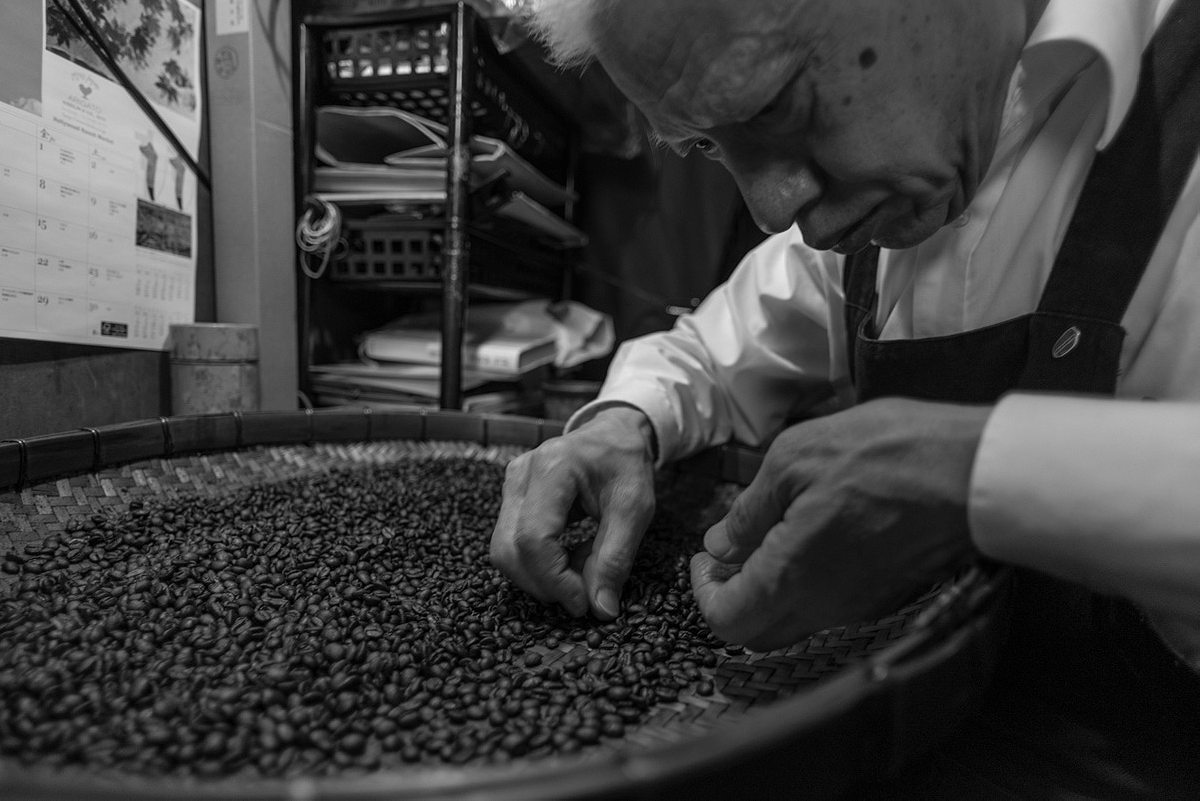
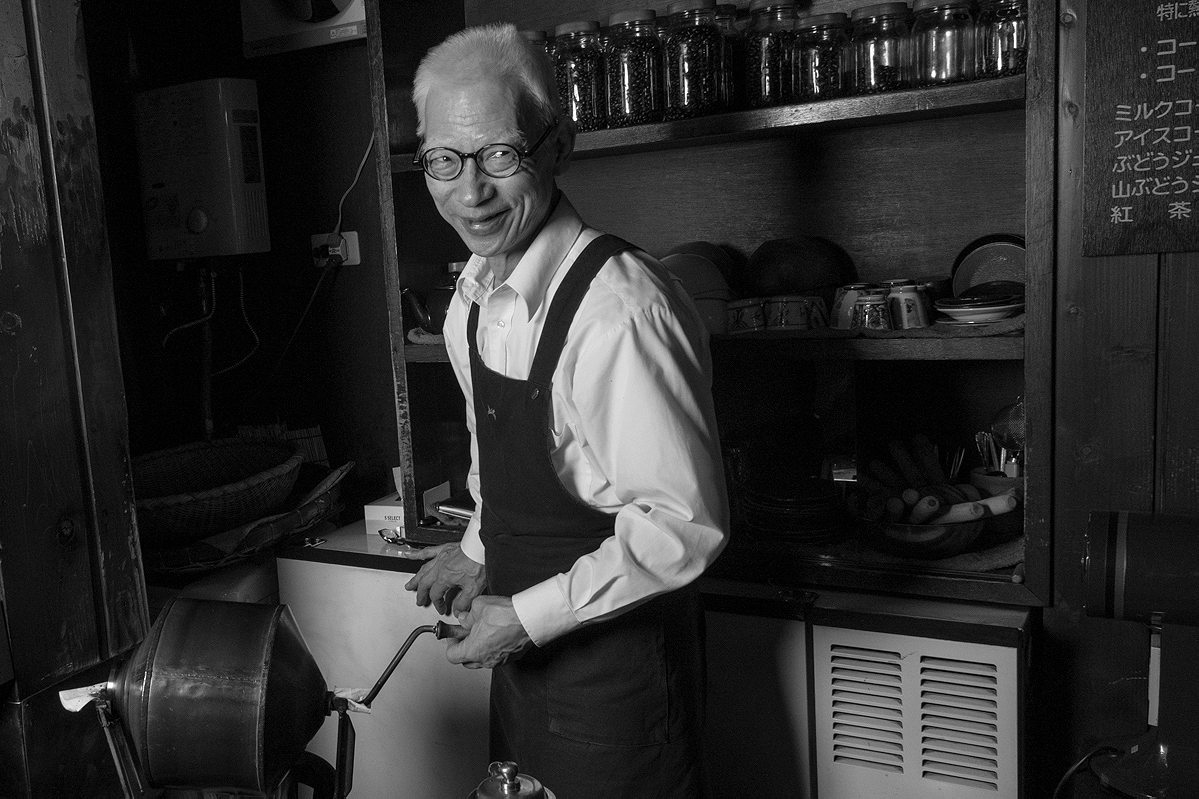
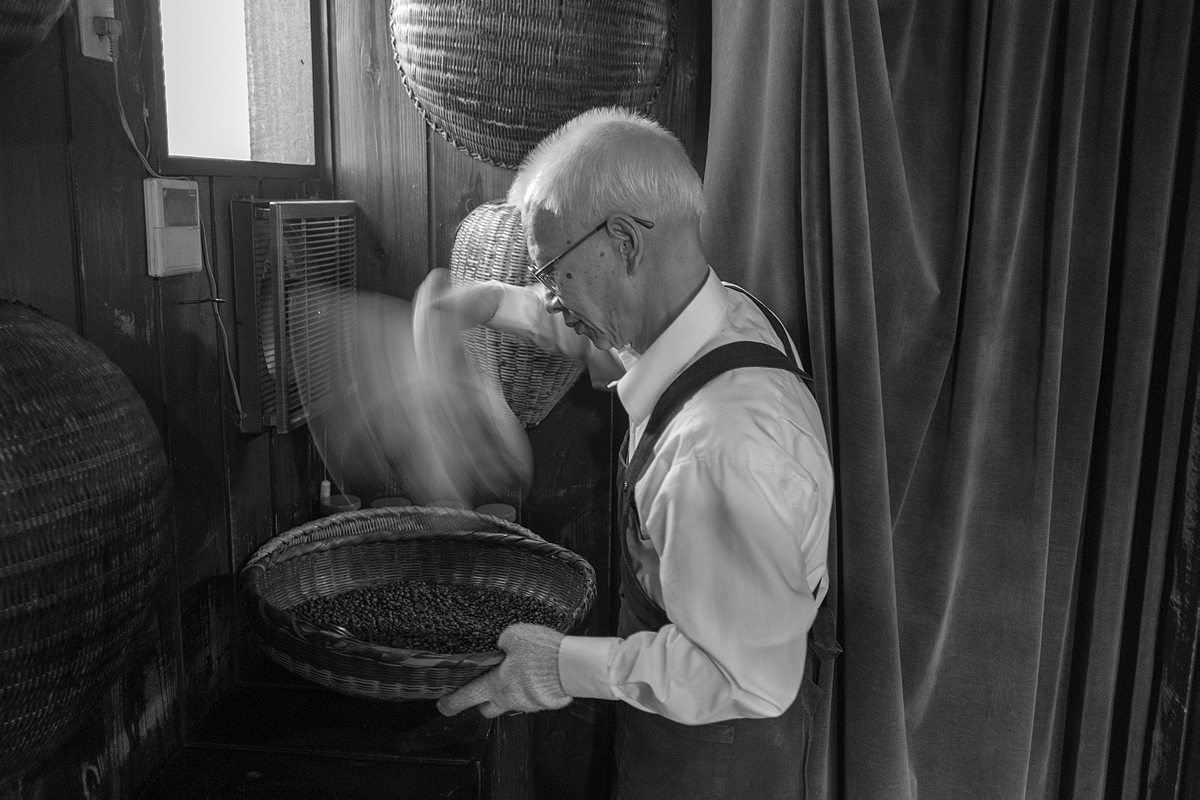
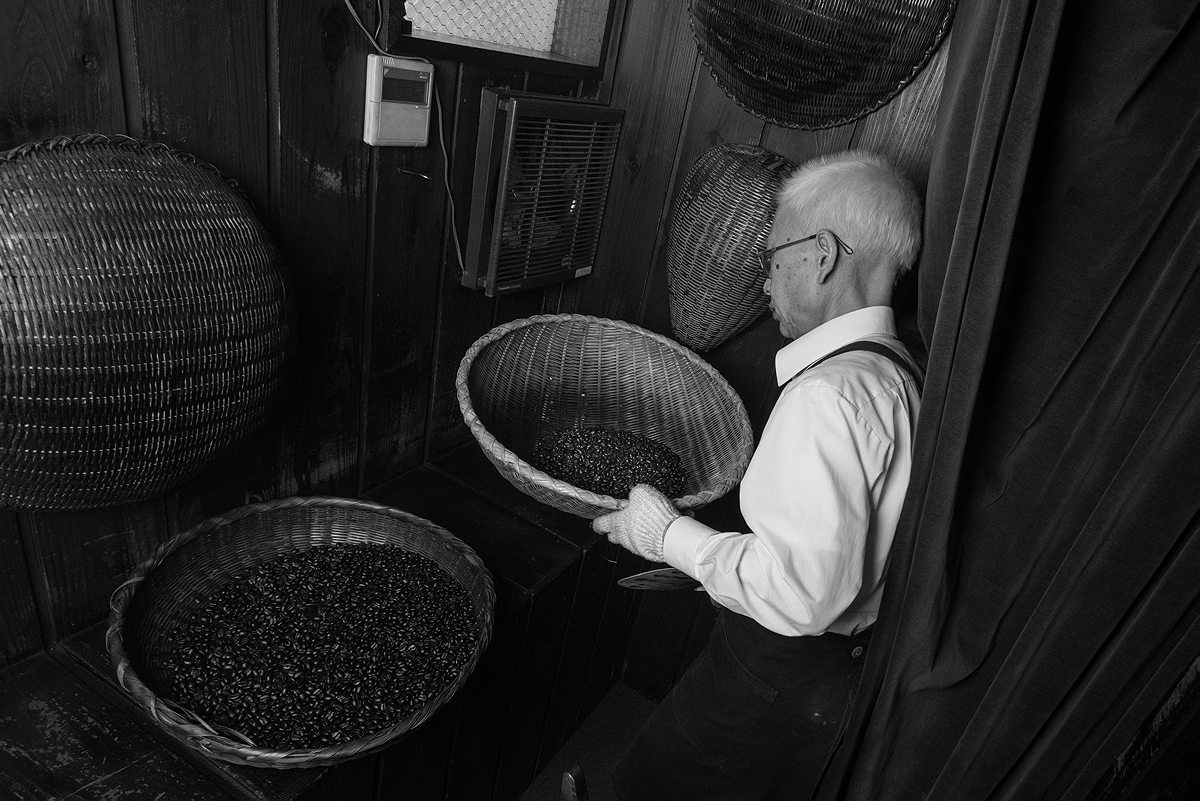


After 30 minutes of roasting, he empties the beans onto a wide, shallow basket and fans them the same way a sushi master fans a batch of steamed rice. Then he does his final inspection, discarding less-than-perfect beans before bringing the coffee back to the bar for grinding and filtering.
He doesn’t pour in a thin stream, but in tiny drops like a leaky faucet, raising and lowering the filter, rolling his wrist to tilt the grains, always moving the slow drip in concentric circles. It takes nearly 5 minutes for the full cup to filter.
He serves the coffee in delicate porcelain cups (heated with hot water and dried just before serving), an almost comical juxtaposition to the muscular potion he pours inside. A typical coffee shop might put 20 grams of beans into a 12-ounce cup; the strongest option on Daibo’s menu condenses 25 grams of dark-roasted coffee into four transcendent sips.
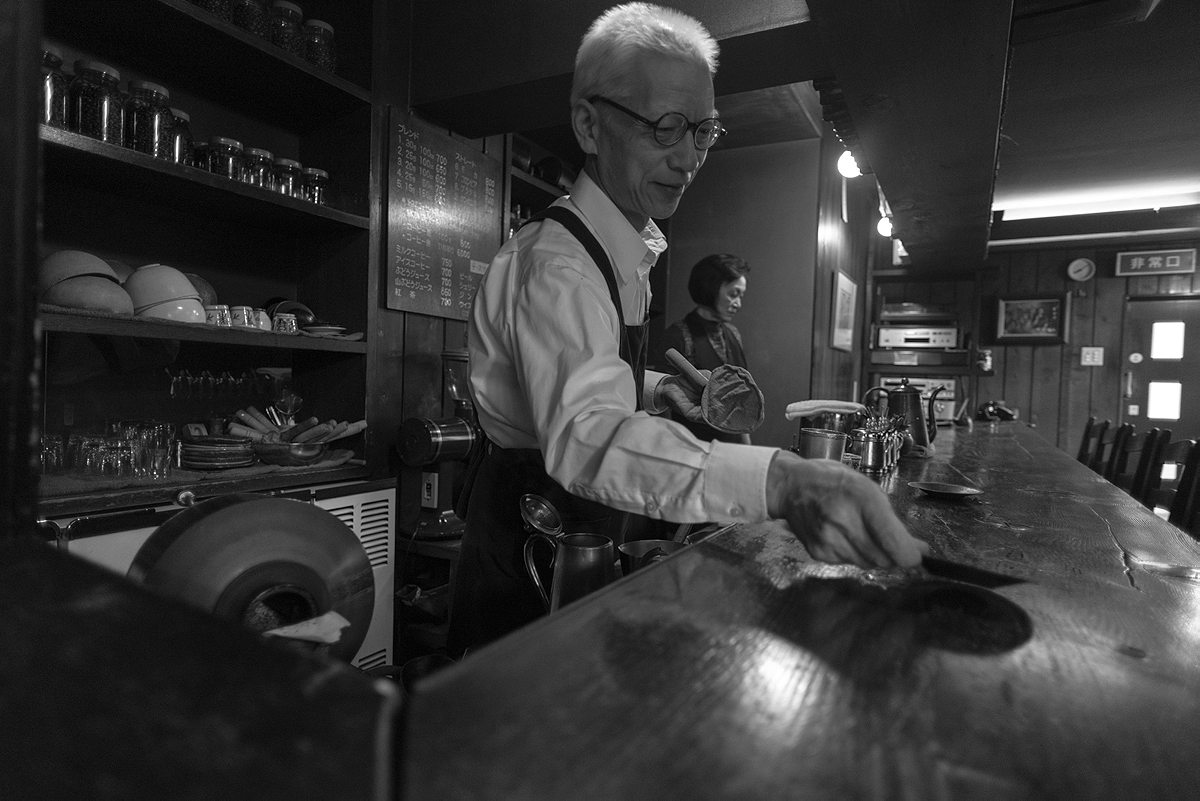
That the rest of the coffee world currently adheres to the style of coffee he’s been serving for nearly four decades—carefully sourced, roasted in house, filtered as slowly and methodically as possible—is news to Daibo-san. His shop is a bunker from the outside world, a refuge from decades of fickle caffeine trends: Italian espresso bars and latte art, Chemex and siphons, huge milky drinks and tiny pointy moustaches. Though Daibo transmits an air of absolute seriousness, there are no rules and pretensions in his house. The sugar doesn’t hide beneath the bar; the man himself places it right in front of you—along with a little silver canister of cream no bigger than a thimble—when he serves you his potent brew.
You won’t need it, of course, because what you are tasting is the perfect expression of the raw material he has selected—whether it’s the brooding intensity of a cup from Colombia, or the almost wine-like brightness of the fruit from Kenya. By the time you finish, your body will be buzzing with caffeine and your head swimming in all the tiny details that made it possible. This is not just a deeply delicious cup of coffee, but an expression of an entire philosophy. A lifestyle choice. A line in the sand.
Daibo-san would never say it; he doesn’t have to. But the message at the bottom of the cup is clear:
You cannot be better than me; only different.
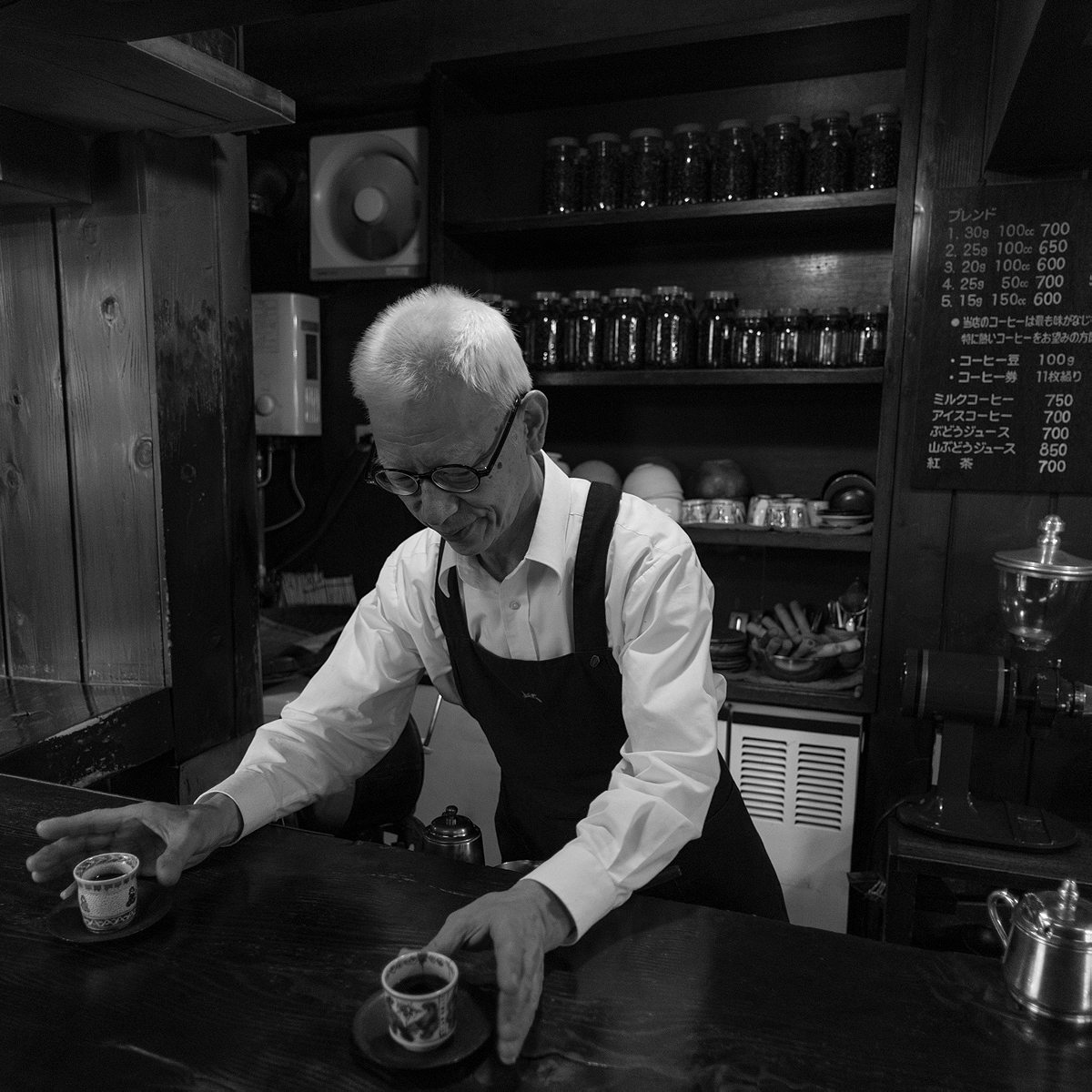
The concept of shokunin, an artisan deeply and singularly dedicated to his or her craft, is at the core of Japanese culture. Japan’s most famous shokuninthese days may be Jiro Ono, immortalized in the documentary Jiro Dreams of Sushi, but you will encounter his level of manic focus across the entire food industry. Behind closed doors. Down dark alleyways. Up small stairwells. Hiding in every corner of this city and country: The 80-year-old tempura man who has spent the past five decades discovering the subtle differences yielded by temperature and motion. The encyclopedic barman who hand chisels every last piece of ice and wears his tuxedo extra crisp because you can taste the difference. The young man who has grown old at his father’s side, measuring his age in kitchen lessons. Any moment now, it will be his turn to be the master, and when he does, he’ll know exactly what to do.
These are people who pursue perfection down to its last decimal point, whose persistence and focus wear away at the sharp edges of life’s ambitions like a stream of mountain water over a granite stone.
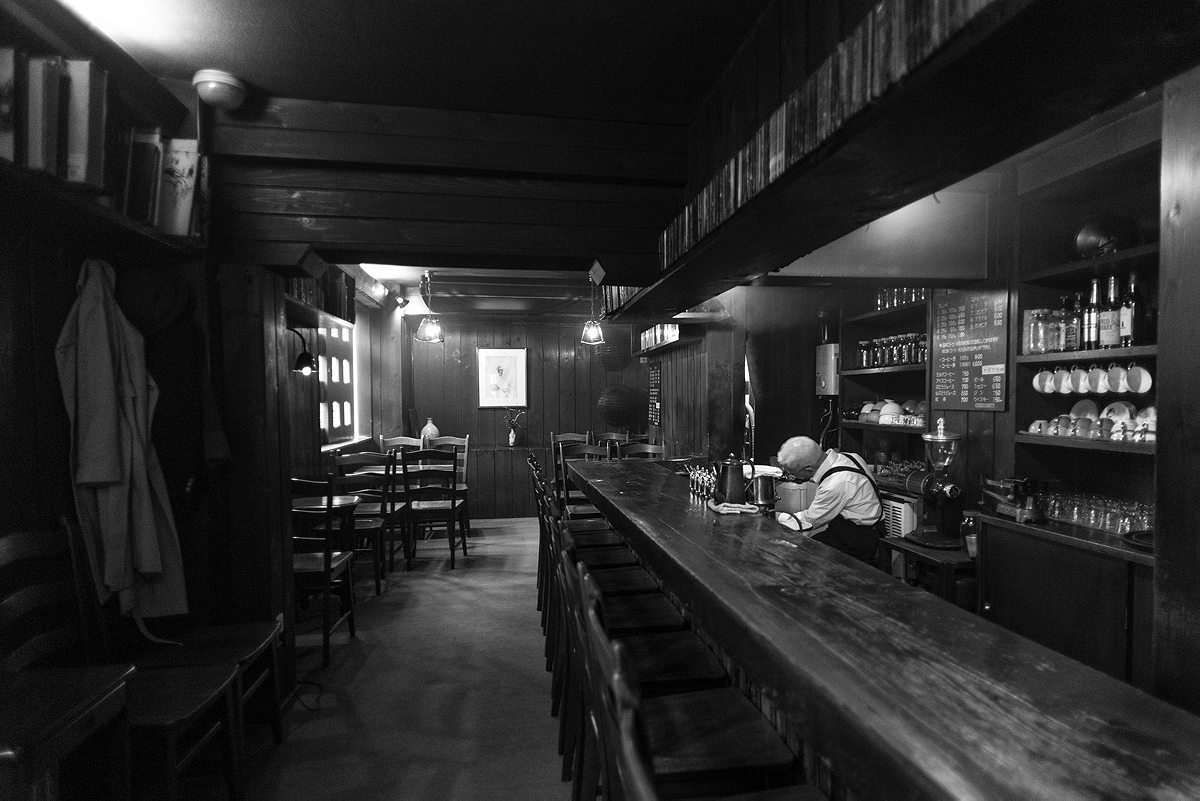
“The shokunin has a social obligation to work his or her best for the general welfare of the people,” says Japanese sculptor Tasio Odate. “This obligation is both spiritual and material, in that no matter what it is, the shokunin’s responsibility is to fulfill the requirement.”
Put another way, Daibo could probably buy beans freshly roasted and meticulously cleaned to his exacting specifications from a reputable roaster in Tokyo and achieve nearly the same quality cup of coffee, saving time, his eyesight, his aging back. But he doesn’t. Because in Japan, it’s not about the end; it’s about the means.
He does none of this for recognition. Not much has been written about him. He can’t remember the last time he’s been photographed. When he moves on, he won’t be a consultant for upstart cafes or a star on the TED lecture circuit. One day he will make a cup of coffee he spent his entire life learning to make; the next day, he won’t.
This isn’t an issue of the modern coffee market squeezing out an old artisan; Daibo fills his shop most days—with old men reading the paper, young women warming up to the work day, the regular who keeps his favorite manga tucked behind the bar. It’s same to say he could carry on like this until his legs give out on him. But the building his kissa occupies is being swallowed by the encroaching luxury of Omotesando and Aoyama; it is slated to be destroyed and rebuilt in early 2014. Daibo-san has simply decided that it is time to move on.
If it’s a classic kissaten experience you seek, don’t worry, there are still more than 80,000 traditional coffeeshops left in the country, some serving exceptional brew. At L’Ambre in glitzy Ginza, you can sip coffee made from beans aged for decades in house. At Chatei Hatou in Shibuya, not far from Daibo, is a staff deeply dedicated to the tiniest details of coffee-making. And hiding behind doors you didn’t know existed, you’ll find a generation of new, young shokunin doing big things in tiny spaces.
What you won’t find is a 66-year-old man spinning his hand-cranked roaster 30 minutes at a time, picking through piles of still-warm beans, pouring each cup with the concentration of an alchemist on the verge of unlocking some ancient mystery. There was only one of those, and next Monday he will end his quiet pursuit of perfection.